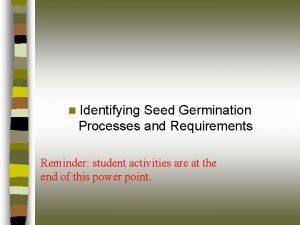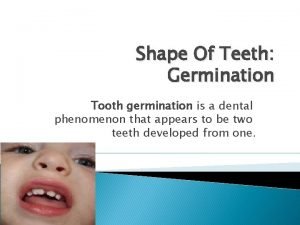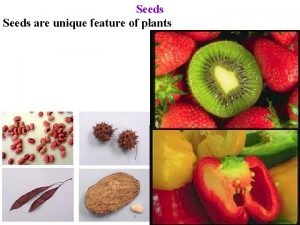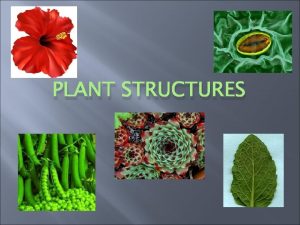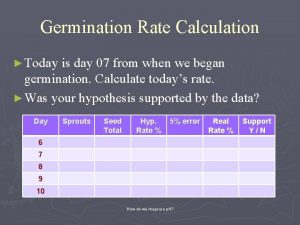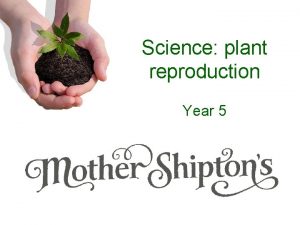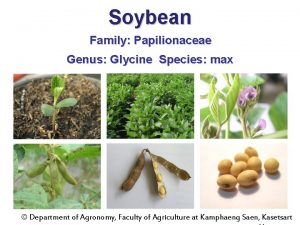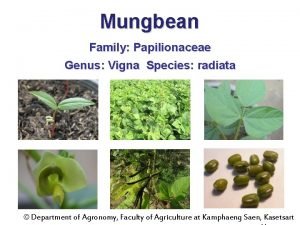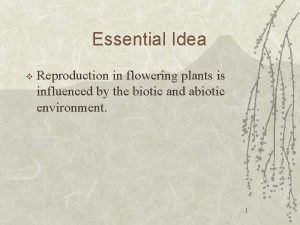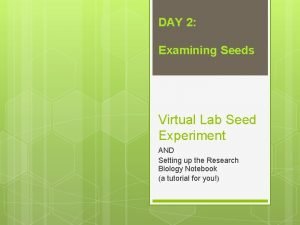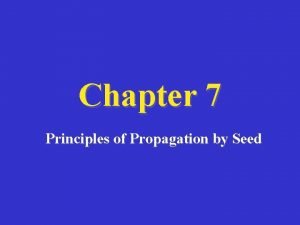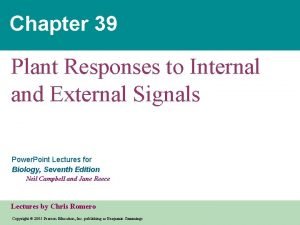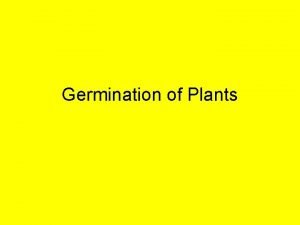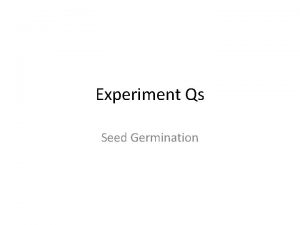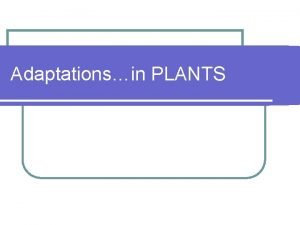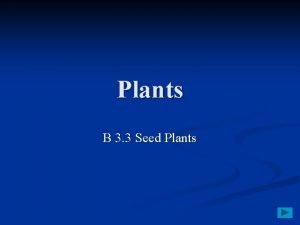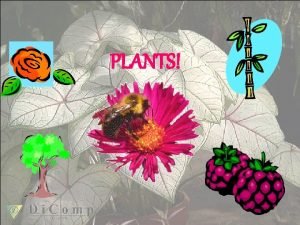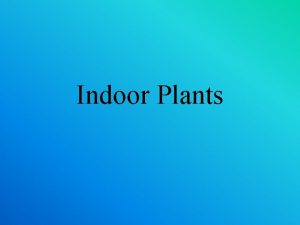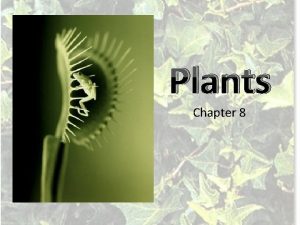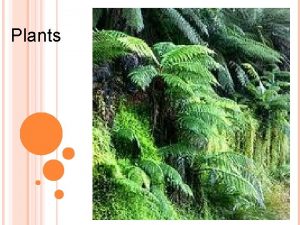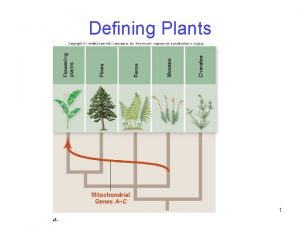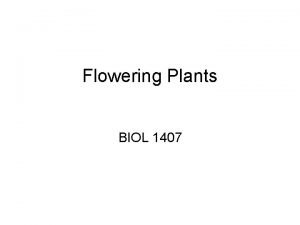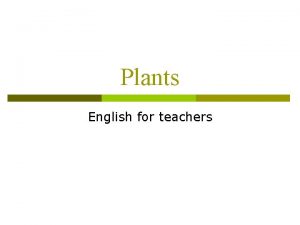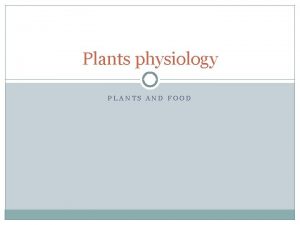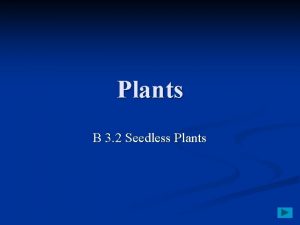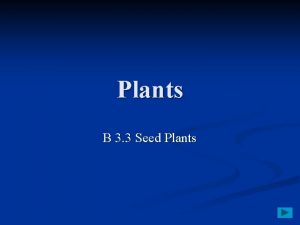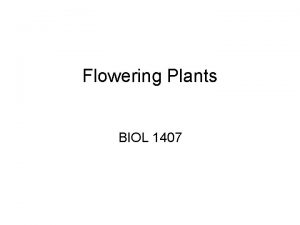Definition Germination Germination in plants is the process





















- Slides: 21

Definition: Germination • Germination in plants is the process by which a dormant seed begins to sprout and grow into a seedling under the right growing conditions.

Type of Germination: (i) Epigeal germination – In this, the cotyledons are raised out of the soil and generally become green and photosynthetic. In dicots, they are pushed up by rapid extension of hypocotyl before growth of the epicotyl. – Epigeal germination occurs in bean, caster, mustard, tamarind, sunflower etc. (ii) Hypogeal germination – In this type of germination, the cotyledons remain underground. Hypocotyl growth is restricted. The epicotyl grows to raise the first leaves out of the soil. – Hypogeal germination occurs in dicotyledenous seeds of gram, pea, mango, ground nut etc and in monocotyledons like rice, maize, wheat etc.

Special type of Germination (iii) Viviparous germination – This is a special type of germination occurring in mangrove plants. These plants generally grow in salty lakes, sea coasts and deltas. Here, the seed germinates while still attached to the parent plant. – The embryo emerges out of the fruit with a massive radicle pointing downwards. Due to increased weight, the seedling separates from the parent plant and establishes itself in the muddy soil below. – Example: Rhizophora

Processes Behind Germination STAGE EVENTS PREGERMINATION (a) (b) (c) (d) GERMINATION (a) Rupture of seed coat. (b) Emergence of seedling, usually radicle first. Rehydration – imbibition of water. RNA & protein synthesis stimulated. Increased metabolism – increased respiration. Hydrolysis (digestion) of food reserves by enzymes. (e) Changes in cell ultrastructure. (f) Induction of cell division & cell growth. POST GERMINATION (a) Controlled growth of root and shoot axis. (b) Controlled transport of materials from food stores to growing axis. (c) Senescence (aging) of food storage tissues.

Factor Affecting on Germination 1. Abiotic Factors: 1) Light 2) Temperature 3) Aeration (Oxygen) 4) Soil type and depth of sowing 2. Biotic factors: 1) Viability of seed 2) Dormancy period 3. Other factors:

• Factors that affect seed germination are divided in two categories, internal and external factors. • The internal factors include seed vitality, genotype, seed maturation and seed dormancy. • The external factors are: water, temperature, oxygen, light and smoke.

Abiotic Factors: LIGHT • Generally seeds require darkness to germinate. However, lettuce, tobacco, tomato and many grasses need to light exposure to germinate. • These seeds require the red portion of the light spectrum, while far red light inhibits germination. Many small seeds with low amounts of storage reserves (such as lettuce) show such a red light requirement.

• These seeds must not be buried below the soil so deeply that light cannot penetrate. Although research suggests that even a few minutes of exposure will allow the germination to occur. • Phytochrome is a plant pigment found in cytoplasm that senses the presence of red light. The red-absorbing form of phytochrome changes to the far-red absorbing form when it absorbs red light (660 nm) and back again when it absorb far-red light (730 nm). Thus the presence of the far-red form of phytochrome ends the inhibition of germination in these seeds.



Abiotic Factor: Temperature • As with most reactions germination generally occurs faster when at warmer temperatures. However there is sometimes a need for cool temperatures to break dormancy. • Stratification is one strategy that is employed in woody species in particular. It requires a moist, cool period that degrades growth inhibitors that prevent germination. Once the inhibitors are degraded and all other conditions are met then germination will occur.

• The temperature for germination to occur is quite different than the temperature requirement to break dormancy. Generally the temperature for germination correlates to the temperature needed for successful plant growth. • Seeds of cool season crops germinate best at temperatures between 32 and 50 degrees Fahrenheit. (Examples: celery, lettuce, peas. ) Warm season crops germinate best at temperatures between 59 to 79 degrees Fahrenheit.



Abiotic Factors: Oxygen • Another requirement for germination is aeration (oxygen). • A. Respiration rates for germinating seeds are very high, therefore adequate oxygen is necessary. The germination percent of most seeds will be retarded if the oxygen percent goes below 20 percent. (Normal air is 20 percent oxygen. ) • B. Seedbeds that are over-watered or poorly drained will cause the oxygen supply to become limited, so the germination percent will diminish.

Abiotic factor: soil type • Soil type is widely affected on seed germination, there are so many parameters of soil affecting on seed germination. • In that factors, soil salinity, acidity, salt concentrate, EC of soil, soil porosity, water holding capacity, texture of soil also affect on seed germination. Most problematic factor is water holding capacity of soil water holding capacity.


Abiotic factor: Depth of sowing • Proper planting depth is a direct correlation to seed size. • The general rule of thumb is larger seeds can be planted more deeply than small seeds. This is due to the energy needed to emerge. Larger seeds have greater food reserves from which to draw energy for respiration and growth. They are able to emerge from greater depths. • Soil types also affect the planting depths. The surface of sandy soils tends to dry out quickly, so seeds planted in these soils should be planted deeper, than in loam soils.

Seed Dormancy • Most seeds produced by mature plants pass through a period of inactivity or dormancy prior to germination. During this period of inactivity, seeds remain viable. • Dormancy may be internal, external, or a combination of both. 19

Embryo (Internal) Dormancy • Dormancy may occur when a mature seed contains an underdeveloped or immature embryo. • Internal dormancy of most seeds involves a period of after-ripening. After-ripening occurs when a seed does not or is not ready to germinate until it completes a certain stage of development. • Some seeds mature in the fruit but do not germinate until released from the fruit. • This type of dormancy can not be overcome, it can be only recover by waiting till seed become ready. 20

Seedcoat (External) Dormancy • A seed may require a certain amount of light to germinate causing the seed to remain dormant until exposed to light. • The seed coat may be hard and/or thick, preventing the absorption of water, intake of oxygen, or physically preventing the expansion of the embryo. • This type of dormancy can be recover by scarification. By scarification we can make seed coat soft and thin for easy germination. 21
 Labeled bean seed diagram
Labeled bean seed diagram Nonvascular plant
Nonvascular plant Non vascular plants
Non vascular plants Features of non flowering plants
Features of non flowering plants Photosynthesis equation
Photosynthesis equation Dicot seed germination diagram
Dicot seed germination diagram Germination tooth
Germination tooth Define seed dormancy
Define seed dormancy Seed maturation
Seed maturation Conclusion of seeds
Conclusion of seeds Conclusion for seed germination
Conclusion for seed germination Monocot germination
Monocot germination Germination rate calculator
Germination rate calculator Pollination fertilisation seed dispersal germination
Pollination fertilisation seed dispersal germination Conclusion of seed germination
Conclusion of seed germination Plumule
Plumule Mungbean family
Mungbean family About germination
About germination Angiosperms double fertilization
Angiosperms double fertilization Seed germination virtual lab
Seed germination virtual lab Hypogenous germination
Hypogenous germination Chapter 39 plant responses to internal and external signals
Chapter 39 plant responses to internal and external signals
